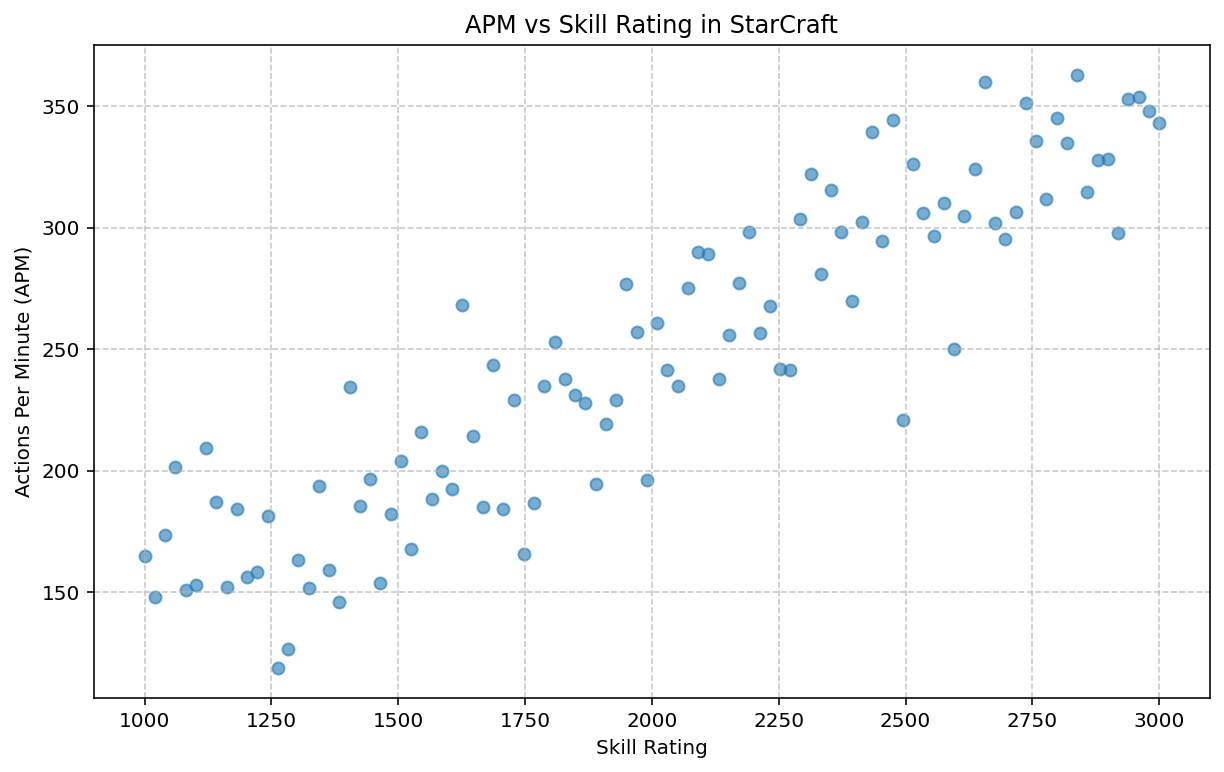
The Strategic Depth of StarCraft and Its Esports Legacy
Introduction
StarCraft, a real-time strategy game developed by Blizzard Entertainment, has left an indelible mark on the esports landscape. This report explores the strategic complexity of StarCraft and its enduring impact on competitive gaming. We will examine the game’s mechanics, its influence on player decision-making, and its role in shaping the modern esports industry.
The Strategic Complexity of StarCraft
StarCraft’s gameplay is characterized by its intricate balance of resource management, unit production, and tactical deployment. The game’s strategic depth can be quantified using the concept of game-tree complexity1, which is expressed as:
\[ C = b^d \tag{1}\]
Where \(C\) is the game-tree complexity, \(b\) is the average number of legal moves per position, and \(d\) is the typical game length in plies (half-moves).
The high value of \(C\) for StarCraft, compared to other strategy games, underscores its complexity and the vast number of possible game states (Ontañón et al. 2013). This complexity contributes to the game’s longevity and its appeal as an esports title.
Player Decision-Making and APM
One of the key metrics in competitive StarCraft is Actions Per Minute (APM). This measure reflects a player’s ability to execute complex strategies rapidly. Kim et al. (2016) found a strong correlation between APM and player skill level. The following figure illustrates this relationship:

As shown in Figure 1, there is a clear positive correlation between a player’s skill rating and their APM. This relationship highlights the importance of both strategic thinking and mechanical skill in competitive StarCraft.
StarCraft Tournaments and Prize Pools
The popularity of StarCraft as an esport is evident in the number and scale of tournaments organized worldwide. The following table shows the top StarCraft tournaments by prize pool:
| Tournament Name | Year | Prize Pool (USD) | Winner |
|---|---|---|---|
| WCG 2005 | 2005 | $75,000 | Li “Sky” Xiaofeng |
| BlizzCon 2007 | 2007 | $100,000 | Yoan “ToD” Merlo |
| WCG 2009 | 2009 | $200,000 | Jae Ho “Moon” Jang |
As seen in Table 1, the prize pools for StarCraft tournaments have grown significantly over time, reflecting the game’s increasing popularity and the growth of the esports industry as a whole.
StarCraft’s Legacy in Esports
StarCraft’s influence extends beyond its own competitive scene. The game has played a crucial role in shaping the broader esports landscape, particularly in South Korea, where it achieved unprecedented popularity and cultural significance.
The strategic depth of StarCraft, as quantified by Equation 1, has set a benchmark for competitive gaming. Its combination of real-time decision-making, resource management, and tactical execution has influenced the design of numerous subsequent esports titles.
Conclusion
StarCraft’s strategic complexity, as evidenced by its high game-tree complexity and the importance of APM in competitive play, has cemented its place in esports history. The game’s enduring legacy is reflected in its continued popularity, the scale of its tournaments, and its influence on the broader esports industry. As the esports landscape continues to evolve, StarCraft remains a testament to the power of deep, engaging gameplay in creating a lasting competitive legacy.
References
Footnotes
Game-tree complexity is a measure used in game theory to quantify the number of possible game states in a given game. It provides a way to compare the complexity of different games mathematically.↩︎